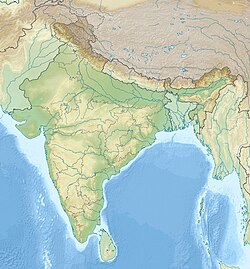| Jogulamba Temple | |
|---|---|
 Gopuram of Jogulamba temple | |
| Religion | |
| Affiliation | Hinduism |
| District | Jogulamba Gadwal district |
| Deity | Devi |
| Location | |
| Location | Alampuram |
| State | Telangana |
| Country | India |
| Coordinates | 15°52′37.2″N78°07′55.2″E / 15.877000°N 78.132000°E |
| Architecture | |
| Style | Dravidian |
Jogulamba Temple is a Hindu temple dedicated to Goddess Jogulamba, a form of Shakti located in Alampuram, Telangana, India. The temple is one of the Maha Shakta pithas, a group of eighteen (Ashtadasa) temples considered the most significant shrines and pilgrimage destinations in Shaktism. Alampur is located on the banks of the Tungabhadra river near its confluence with Krishna river. Jogulamba temple is located in the same complex as that of the Navabrahma Temples, a group of nine Shiva temples built between the seventh and eighth century CE.
Contents
The principal deities at the Jogulamba temple are Jogulamba and Balabrahmeswara, a form of Shiva. In this temple Goddess Jogulamba is seen seated on a corpse with scorpion, frog, and lizard on the head. The word Jogulamba is said to be derived from the Telugu word Yogula Amma which means Mother of Yogis. In 2019, the temple was included under the PRASAD (Pilgrimage Rejuvenation Advancement Drive) scheme of the Government of India. [1]













